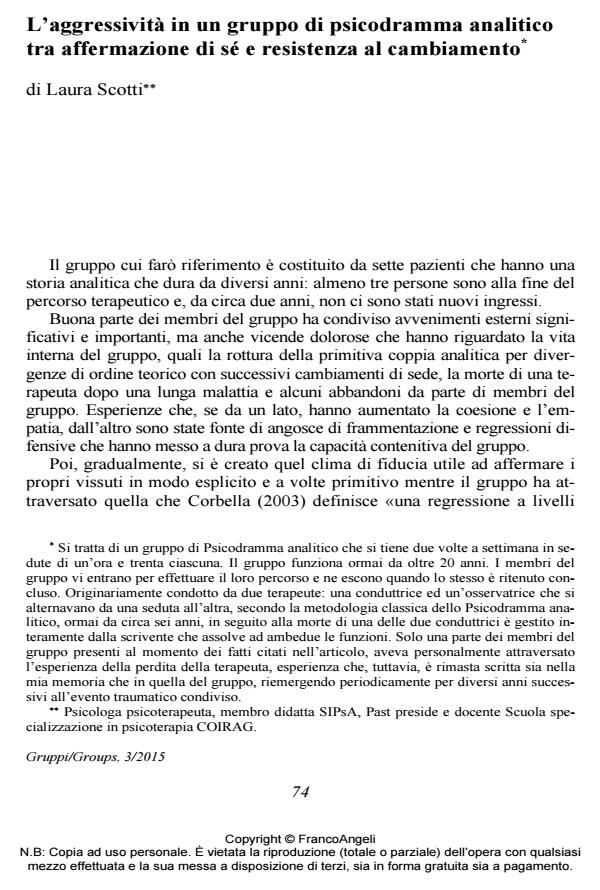Aggressiveness in a psychodrama group amid self-assertion and resistance to change
Journal title GRUPPI. Nella clinica, nelle istituzioni, nella società
Author/s Laura Scotti
Publishing Year 2017 Issue 2015/3
Language Italian Pages 17 P. 74-90 File size 196 KB
DOI 10.3280/GRU2015-003009
DOI is like a bar code for intellectual property: to have more infomation
click here
Below, you can see the article first page
If you want to buy this article in PDF format, you can do it, following the instructions to buy download credits

FrancoAngeli is member of Publishers International Linking Association, Inc (PILA), a not-for-profit association which run the CrossRef service enabling links to and from online scholarly content.
The author deals with the subject of anger and aggressiveness in a psychodrama group within which some patients, at an advanced stage and nearing conclusion of their therapy, demonstrate what, initially, may be interpreted as a "delegated regression" in order to enable the group as a whole to revisit old positions that had been partially overcome but not completely resolved. Interpretation, far from being reassuring and explicative, on the contrary, produces an increase in revenge and anger impulses which hinder development of the therapeutic relationship. Only with the author’s contribution to the transferal scene, due to the inability of the group members to go through the comprehension phase and corresponding empathy, was it possible to interpret anger as an attempt to draw attention to a state of distress and suffering, rather than resistance to the risk of reawakening repressed representation. This contribution led to the reestablishment of equilibrium so favouring therapeutic evolution of each participant and the group.
Keywords: Regression, unconscious belief, lack, resistance, self-object, empathy
Laura Scotti, L’aggressività in un gruppo di psicodramma analitico tra affermazione di sé e resistenza al cambiamento in "GRUPPI. Nella clinica, nelle istituzioni, nella società" 3/2015, pp 74-90, DOI: 10.3280/GRU2015-003009